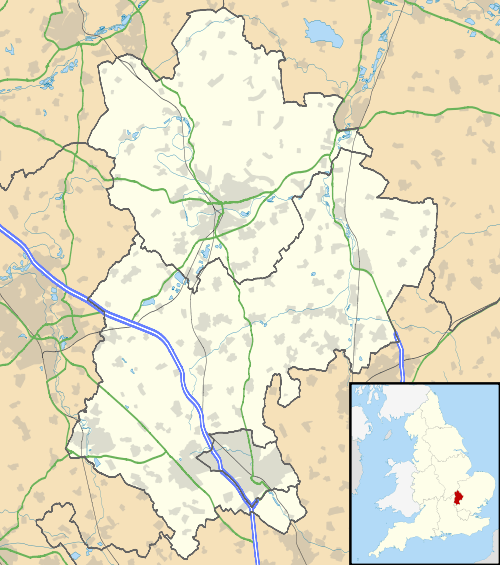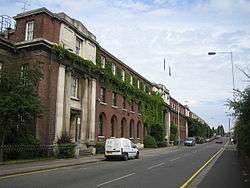Biscot
- for the French actor see Georges Biscot
| Biscot | |
 Biscot |
|
| Population | 13,660 (including Bury Park).[1] |
|---|---|
| OS grid reference | TL059227 |
| Unitary authority | Luton |
| Ceremonial county | Bedfordshire |
| Region | East |
| Country | England |
| Sovereign state | United Kingdom |
| Post town | LUTON |
| Postcode district | LU3 |
| Dialling code | 01582 |
| Police | Bedfordshire |
| Fire | Bedfordshire and Luton |
| Ambulance | East of England |
| EU Parliament | East of England |
| UK Parliament | Luton South |
|
|
Coordinates: 51°53′35″N 0°25′41″W / 51.893°N 0.428°W
Biscot is an area of Luton close to the town centre. The name of Biscot can be traced back to the Domesday Book where it is recorded as Bissopescote which means 'King's land'.[2]
Commer produced trucks in Biscot for many years at their factory in Biscot Road.[3] SKF, the Swedish ball bearing manufacturer, were located on Leagrave Road and employed many local people until the 1970s when they closed their operations in the area.

Politics

Biscot ward is represented by Cllr Mohammed Ayub (Labour), Cllr Naseem Ayub (Labour) and Cllr Tahir Khan (Labour).
The ward forms part of the parliamentary constituency of Luton South, and the MP is Gavin Shuker (Labour). Biscot is within the East of England (European Parliament constituency).

World War 1
[4] Biscot Camp was the home of Number 6 Reserve Training Brigade (Territorial Forces) Royal Field Artillery. Many thousands of Gunners and Drivers, were trained here during World War I, before they were shipped overseas for service manning the big guns of the Royal Field Artillery.
Biscot Camp was a large establishment, and was located in an area framed by Kennington Road, Biscot Road, Holland Road, and Leagrave Road. These roads had been constructed immediately prior to the outbreak of war, but houses had not yet been built on them.
The famous Author Dennis Wheatley trained here.
Historian Basil Williams (historian) was an Education Officer stationed here, and was awarded an M.B.E for his service. The commanding Officer during the early stages of the war, was a Colonel C.H. Alexander, he left in January 1917.
The camp closed in November 1919, and the last of the huts from the camp was demolished in September 1937, it was believed this hut was the YMCA hut, as it continued in use as St. Andrews Parish Hall.
Local Attractions

| Key | |
| | Abbey/Priory/Cathedral |
| | Accessible open space |
| | Amusement/Theme Park |
| | Castle |
| | Country Park |
| | English Heritage |
| | Forestry Commission |
| | Heritage railway |
| | Historic House |
| | Museum (free/not free) |
| | National Trust |
| | Theatre |
| | Zoo |
Local Newspapers
Two weekly newspapers are delivered free to all the houses in Biscot. However they are not specific to Biscot. They are:
- Herald and Post - Delivered every Thursday
- Luton on Sunday- Delivered every Sunday